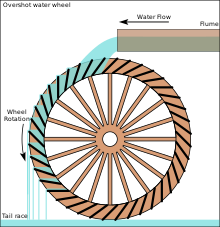... A patent is just the right to sue, nothing more. It does not make your idea work, does not confer prestige, and does not make you any money. (And I should know - I have a half dozen, and I'm still not famous or rich!)...
Welcome to the club of owners of worthless inventions. Typically only the inventor thinks his invention may be worth money, useful, etc. and worries that some one may "steal his idea."
In 99.9999% of the cases* of privately owned patents NO ONE ELSE is even interested in the invention, so even the right to sue is totally useless except in 0.0001% of the cases. Even in that 0.0001% of the cases, it typically is long after the patent has expired that some one else becomes interested in the idea (or you can not afford the court cost to defend your rights). I.e. 99% of the patents that some one else will want to exploit, they can for free as the patent has expired or you just cannot afford to stop them. Thus your chance of making any money on your patented idea is approximately (converting % to decimals): 0.000001x0.001 = 10^(-9) or in words one in a billion! I don't know of even one recent** invention owned by person that has ever made any money (unless it is so simple he can make and sell it to the public himself). Do you?
Like you, I have several patents and have never made a dime on any. I did have the engineers at Shell oil very interested in one. - About 40 years ago, we exchanged three or four letters, both ways, until they started talking to Shell's legal department (presumably to see how a licensing agreement / contract could be drafted). Their next letter told me they could not discuss the idea further as Shell might have related ideas and Shell's lawyers said they had already violated Shell policy. There is a huge and very powerful corporate resistance to outsider's ideas. It is called the "not invented here syndrome."
If you want to make money with an invention, it should be something simple and cheap to make so you can market it yourself. Something like a plastic disk with a monkey face on it to hang on your key chain, etc.
--------------
*For corporate owned patents probably up to 1% are useful and occasionally even legally disputed as they do have value.
** Many years ago, before the "not invented here syndrome" was universal policy, some did*** make money with their invention but I think no invention in the last decade has made any money for its private inventor.
*** If you are old enough to remember fountain pins and the ink bottle that had an inclined piece of glass on one side so you could use almost all the ink in the bottle by tipping and filling that side well, you still may not know that simple private invention made its inventor about a million dollars. (As I recall he got a tenth of a cent royalty on each bottle sold.) And that was back in the day when a million dollars was a rare and huge fortune!


